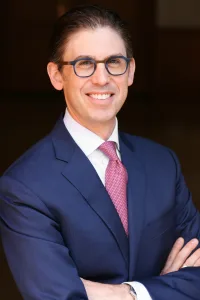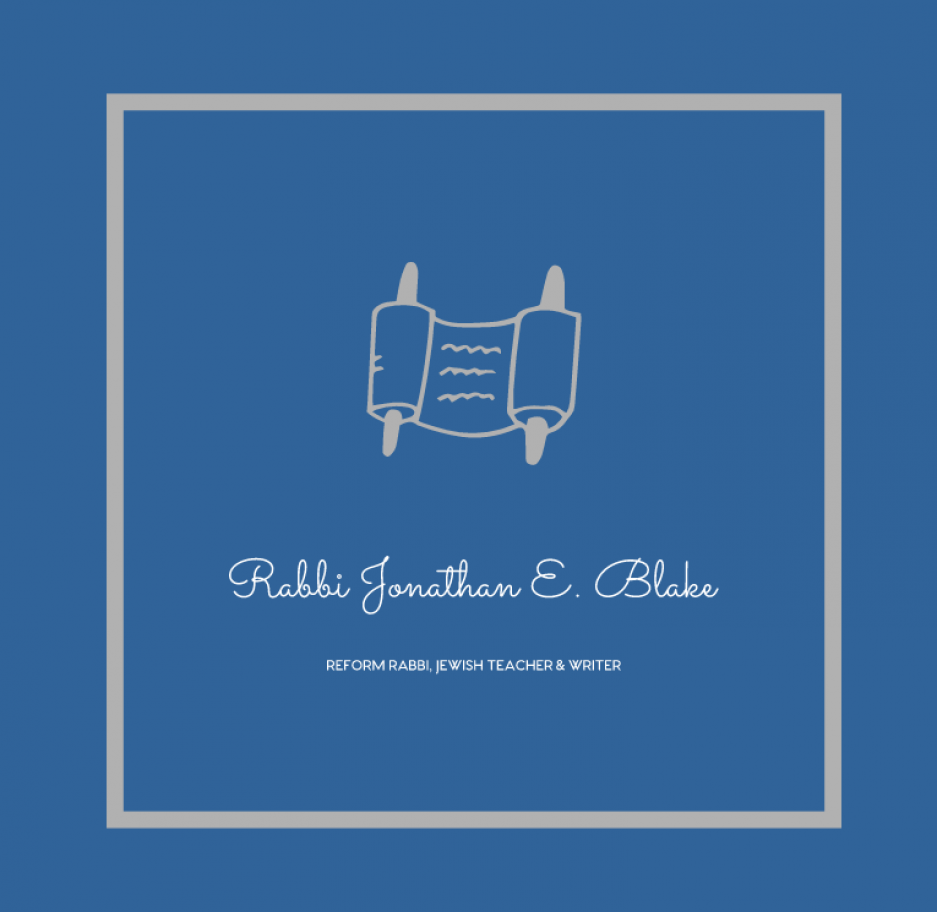Rabbi Jonathan Blake, Westchester Reform Temple
Pesach—which is just around the corner—is a time of questions. At this juncture in the viral outbreak that has engulfed the globe, and which rages with particular ferocity right here in New York, we have more questions than answers:
How long until the number of new infections reaches its peak and begins to subside? Will my loved ones remain safe? How can I know who is telling us the truth? How badly will the pandemic damage the economy? Is my job secure? What will happen to my employees and those who depend on me? What about my retirement prospects? How will this crisis affect my children and grandchildren? How many people will die before we bring the virus under control?
These questions have no answers, at least no easy ones—just models and predictions, best-case-scenarios and worst-case scenarios.
Still, what we might learn about ourselves, about the world, about what really matters, in this unforeseen and unwelcome turn of events, will surely provide ample material for reflection for a much time to come, and so I ask your forbearance as I muddle through along with you, doing my level best to make sense of life in this new reality, doing my best to teach Torah in a time unlike any other.
And, at least for this teacher of Torah, one conclusion is already clear: that we will never look at the Book of Leviticus the same way again.
I confess that I, like many students of Torah, am guilty of not having given Leviticus its proper due, until now. I confess that I, like many students of Torah, have furrowed my brow at its litanies of blood sacrifices; its arcane rituals incumbent on a Biblical Israelite community so far removed from us in space and time; its obsession with cataloguing every living thing and every conceivable experience as pure or impure, kosher or treyf, holy or profane. I confess that, like many students of Torah, I have chuckled at its bizarre rulings and rituals, from the Yom Kippur tradition of casting the sins of the community upon the head of a hapless goat and then driving the poor animal off to die in the wilderness; or the disparities that Leviticus proposes for gender and sexuality: without getting into too many details, that the Book basically favors men, and prefers for them to be straight; all of this and more has been met with an uncomfortable mixture of bewilderment and disdain.
Until now.
Until now, when everything outside looks different and so the Torah looks different, too. The words have not changed but we have changed. The world has changed.
Until now, when the word “plague” could not be spoken without a self-consciously Biblical appreciation for hyperbole—knowing how that word evokes blood and frogs and lice and any of the other nasty things we will mention at next week’s Seder.
Until now, when the ideas of contagion, and purity, and enforced isolation, seemed abstract to all but epidemiologists who have always known that a microscopic virus could, in the worst of circumstances, decimate a civilization.
Until now, when the notion of sacrifice no longer calls to mind the blood-soaked rituals of an archaic cult but rather the important, even life-saving measures that we might take now—the assertion that by giving something up, lives might be saved.
Yet all of these comprise the core vocabulary of the Book of Leviticus. Purity and impurity, contagion and quarantine, sacrifice and priestly dedication: these are the building blocks of this Book.
The fact that the Book of Leviticus seeks to classify the chaos of human existence into neat categories, delineated by clear boundaries—again, pure and impure, kosher and treyf, permitted and forbidden, holy and profane—says a lot about Jews and Judaism.
It certainly portends this moment. When confronting a person with an ailment, the Kohen, the Levitical priest, would do something that resonates eerily with our time. In dealing with a novel condition, the holiest, most life-saving work a priest could do would be to quarantine the symptomatic person for a week or more, until a diagnosis could be confirmed—and then have the patient ritually bathed before re-entry to the community. In the absence of a cure: isolation, rest and fluids—that’s the prescription.
The priest had no particular skill or training in medicine. He was no shaman, no miracle-worker. And yet, in the Book of Leviticus, the priest presides over the public health. The tools at his disposal are rudimentary: visual diagnosis, quarantine, scrupulous personal hygiene. What the Kohen could bring to this often thankless and undoubtedly risky work was a human touch, a compassionate presence, a sacred responsibility to the suffering.
The priest also oversaw the sacrifices of the Israelite community—categorizing and accepting their freewill and mandated offerings, their gifts great and small, from rich and poor alike—that is, overseeing the social welfare system and the basic guarantee that the spiritual life of the Israelite community and especially its core institution, the temple, would remain ever vital.
If you don’t see where I’m going with this, let me spell it out plainly: we are now the priests, we the Kohanim. The Book of Exodus charges us: “You shall be a kingdom of priests and a holy nation.” We. Not just some elite class of religious officials. All of us.
We must now embody a sense of priestly responsibility to the public health, and a priestly orientation toward sacrifice—quite likely more, at this moment, than ever before in our lives. We must each give of ourselves, distancing our physical presence when we most crave to be with the people we cherish. (Here’s one way of thinking that I’ve found helpful: we have never been asked to do so little in order to do so much: by just sitting at home, we literally save lives.)
Let’s sacrifice for the greater good. Let’s give of our time to call the people in our congregation and offer our support. Let’s give of our financial resources to support the people in our congregation who need our help; and, let me even say here, let’s keep in mind the needs of our temple as we consider where we can make sacrifices, great or small, in time and in resources and in love, in order to keep our spiritual home vital through and after this crisis has passed.
Let each of us become a priestly vehicle for the kind of sacrifices that Americans have not been asked to make in more than two generations.
On the front lines of this crisis we find heroes who embody all the noblest qualities of the Levitical priest: the courage to meet the afflicted with compassion, the generosity to sacrifice of one’s self to serve those in greatest need. And they are doing so under extraordinarily stressful and strained conditions. Our healthcare workers are true Kohanim—they who bless and heal through their presence as much as through their wisdom and expertise.
In anticipation of tonight’s service, WRT reached out to those congregants who serve in the healthcare sector. Tonight we gather together as one community to say thank you, to bless you, even as you bless others. Thank you for your service and thank you for your sacrifice.
If you, or someone in your circle of family or friendship, is performing the essential work of attending to the sick and their concerned loved ones, and you feel so moved to stand in your home, we feel honored to share with you this prayer by Rabbi Ayelet Cohen:
Prayer for the Healers
Adapted from Rabbi Ayelet S. Cohen
May the One who blessed our ancestors
Bless all those who put themselves at risk to care for the sick
Physicians and nurses and orderlies
Technicians and home health aides
EMTs and pharmacists
Hospital social workers and respiratory therapists
And all our other frontline healthcare workers who navigate the unfolding dangers of the world each day,
To tend to those they have sworn to help.
Bless them in their coming home and bless them in their going out.
Ease their fear. Sustain them.
Source of all breath, healer of all beings,
Protect them and restore their hope.
Strengthen them, that they may bring strength;
Keep them in health, that they may bring healing.
Help them know again a time when they can breathe without fear.
Bless the sacred work of their hands.
May this plague pass from among us, speedily and in our days.
And let us say: Amen.
A Plea from a Member of WRT’s Medical Community, on the Front Lines of the Covid-19 Pandemic
“Please, Rabbi, just tell people this is real and it is nothing short of a horrifying war that I and my colleagues are fighting it in every way we possibly can.
But the more fight we put into it, the more risk we each personally take because we don’t have what we need, and the more patients come. We feel powerless and are practicing medicine we never thought we would have to.
The best we can often do is hold a patient’s hand for the minute they pass, as they lie there alone. Maybe we can ask about a family member we can call before they die. Acknowledge them by saying their name aloud, and keeping silent for 5 seconds before moving on to the next patient.
When the patient in the next bed dies you see the terror in the roommate’s eyes. They know they’re next, and we do too. Many of these patients have never been sick before, or even ever in a hospital before.
Please tell people to stay home and really socially distance when they must go out. REALLY. And get everyone else to do the same. My children get it, but I think many don’t. Please help congregants understand, and spread the word. We don’t have the weapons we need to fight this war now (for ourselves AND our patients’ safety) and the apex is still coming. I don’t want to practice medicine like this ever again.
I just keep thinking every day that I have died and this is some surreal place I am in. Or a fleeting nightmare. But it’s not, and I know that.
Best wishes for your health and safety, and for all at WRT.”


